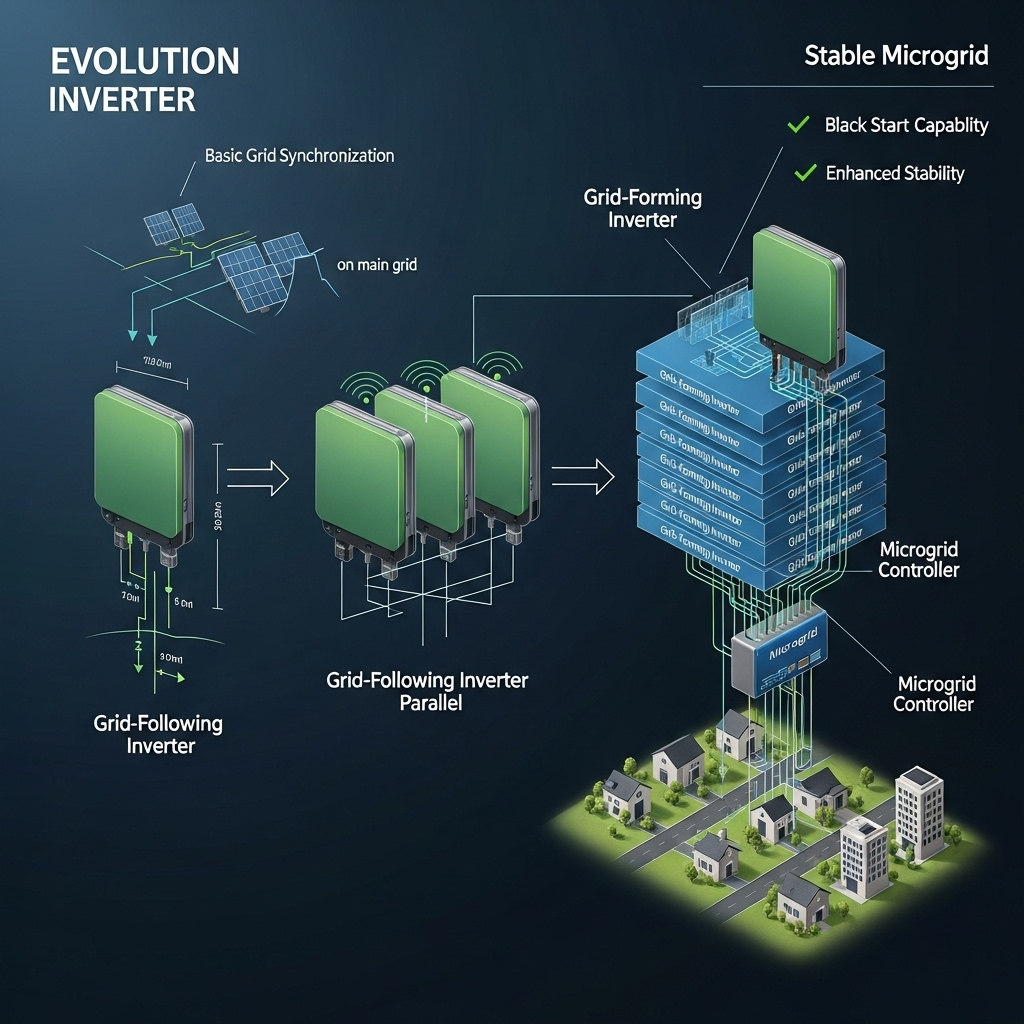Scaling power with multiple inverters sounds simple—tie units together and go. In practice, stability depends on two pillars I verify on every job: accurate current sharing and robust phase lock. This roadmap translates field lessons into steps you can defend with public technical references, then looks ahead to grid-forming (GFM) controls shaping resilient microgrids.
The foundation: why current sharing is non-negotiable
Uneven sharing overheats one unit while others loaf, inviting circulating currents and shutdowns. Classical droop control intentionally lets voltage or frequency “droop” with load so peers pick up their share; modern stacks add DSP control and high-speed communication to refine that behavior under dynamics. See concise overviews of droop strategies and recent improvements in peer-reviewed work.
Further reading: droop control in inverter-based microgrids, improved current-droop strategy (open abstract).
Achieving synchronization: role of PLLs
Phase lock aligns the AC waveforms of all units. A phase-locked loop (PLL)
References: SRF/DQ PLL primer, PLL review for renewable inverters, synchronization methods review.

Parallel vs. split-phase goals
| Parameter | Parallel operation | Split-phase operation |
|---|---|---|
| Primary goal | Increase current/power at one voltage | Create 120/240 V with two hot legs |
| Phase relationship | 0° (synchronized) | 180° between legs |
| Output wiring | L1 to L1, N to N | L1 and L2 as opposing hots with shared N |
| Common use | Large 120 V loads or many branch loads | Pumps, dryers, EV charging at 240 V |
Field checklist that prevents repeat issues
- Use identical inverter models and firmware; mix-and-match invites unequal dynamics.
- Equalize cable gauge and length on DC and AC paths to avoid resistive bias in sharing.
- Verify sharing with clamp meters at several load levels and temperatures.
- Scope the bus during transients (start/stop large loads) to confirm phase lock stability.
From grid-following to grid-forming: what changes
Grid-following (GFL) units “follow the beat” via PLL; they need an external voltage reference. Grid-forming (GFM) controls can establish voltage and frequency and support weak grids or islanded microgrids. Research notes that some capabilities—like black-start—depend on system-level validation (storage sizing, protection schemes, controls), not firmware alone. Useful primers: NREL introduction to GFM controls, NREL black-start with IBRs, DOE/UNIFI specifications for GFM IBRs, IEA on integrating VRE.
Design toward verifiable compliance
If the stack ever operates grid-tied, align with interconnection rules: IEEE 1547-2018 functions (e.g., ride-through, volt/VAR) are requirements; IEEE 1547.1-2020 defines test methods; certification commonly follows 1547.1 conformance via UL 1741 programs. Check with your AHJ/utility for the exact interconnection profile before commissioning.
FAQ
What happens if phase lock is lost?
Unsynchronized waveforms can cause circulating currents and protective trips. Modern controllers shut down or resynchronize quickly, but you should still diagnose wiring asymmetry or timing faults.
Can I parallel different inverter models?
It is strongly discouraged. Different control algorithms and latencies undermine sharing and stability, even if nominal ratings match.
How does cable length affect sharing?
Longer paths add resistance and voltage drop, biasing current away from that unit. Keep DC/AC links symmetrical to maintain equal load participation.
Do grid-forming inverters always provide black-start?
No. Black-start depends on the system (controls + storage + protection) and must be validated under realistic conditions, per research guidance.
Compliance note: This material is informational only, not legal advice. Always verify standards, test methods, and interconnection settings with your AHJ and utility.





Leave a comment
All comments are moderated before being published.
This site is protected by hCaptcha and the hCaptcha Privacy Policy and Terms of Service apply.